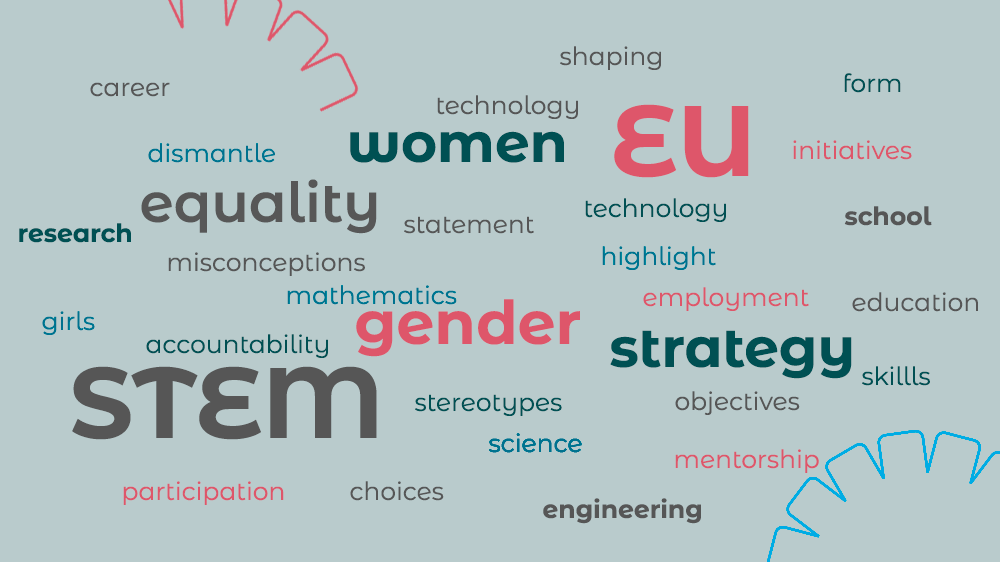In support of the European Union’s work towards a gender equal Europe, ANE has provided feedback to the Commission on the upcoming gender equality strategy for 2026-2030. Our recommendations center on women in STEM, and we believe that STEM should be included as its own section in the strategy.
Set Clear Objectives, Actions, and Indicators to Advance Women’s Participation in STEM
STEM (Science, Technology, Engineering, and Mathematics) fields continue to suffer under a gender gap, with women only accounting for 20% of the workforce.
Equalising the gender gap and attracting more women to STEM is therefore crucial, not only for the sake of gender equality across Europe, but for the sake of Europe’s innovation and competitiveness as well. Apart from the continued gender gap and underrepresentation of women in STEM fields, numbers indicate an alarming shortage of professionals in STEM, as a shortage of at least 2 million science and engineering professionals is projected by the European Commission.
In order to close the gender employment gap and increase the supply of STEM professionals, the EU must encourage more girls and women to pursue education in STEM through targeted initiatives.
Key factors that influence girls’ interest in technical education in Sweden
A report by Engineers of Sweden identifies three main factors that shape girls’ decisions to pursue technical education in Sweden:
Distance to School
Girls are less inclined to enrol in technical programs when the schools are located significantly farther away compared to other available educational options.
Local Role Models
A strong presence of engineers within the community offers visible role models, which can inspire and motivate girls to consider technical education paths.
Collaborative Initiatives
Collaborations between municipalities, educational institutions, and companies—such as the Swedish collaboration Teknikcollege—have proven effective in enhancing the attractiveness of technical education.
See the full report here
How the EU can contribute to closing the gender gap in STEM
While education remains a national competence, the EU has a critical role to play in narrowing the gender gap in STEM. This includes supporting member states through strategic coordination, facilitating policy exchange and mutual learning, providing resources and frameworks for gender-sensitive education policies, and promoting public-private partnerships to foster inclusive STEM careers. Crucially, these efforts must be accompanied by robust mechanisms for follow-up and accountability to ensure meaningful progress across all member states.
ANE’s Recommendations:
- Support and encourage member states to increase investment in early education initiatives that encourage girls and women to pursue education in fields typically dominated by men
- Prioritise Gender Equality, in general and concerning STEM fields, at the highest political level
- Fund and support mentorship programs and speaker series that promote local STEM role models
- Encourage member states to strengthen industry–education partnerships and promote early engagement with engineering by expanding initiatives like Sweden’s Teknikcollege and Engineer the Future
Dismantling Misconceptions and Gender Stereotypes in STEM
To close the STEM gender gap, the EU must also challenge stereotypes that influence how girls’ interests and abilities in science and technology are perceived and treated.
In “The Gender(ed) Gap(s) in STEM”, Research Manager at TEK, Susanna Bairoh, highlights that these stereotypes start taking shape early on, particularly during elementary school. At this stage, children begin to develop aspirations for their future careers, and often associate strengths that relate to STEM to boys, while girls are thought of as having lesser interest or capability. Such socialisation, at an early stage, shapes educational choices and career paths, and reinforces gender imbalances in STEM fields.
Find the full thesis here
By supporting research and initiatives that challenge gender stereotypes in STEM and including stereotype awareness in EU-level strategies, more girls can experience STEM as an inclusive field and a future career option for themselves.

